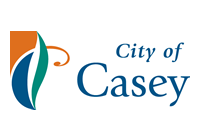City of Casey
Non-English speakers - Dwelling type
In the City of Casey, 5.4% of [Toggles].[COIIDDisplayLabel] speakers were living in medium or high density dwellings.
Dwelling Type is an important determinant of the City of Casey's residential role and function. A greater concentration of higher density dwellings may attract young people and more residents born in particular countries where high density housing is more prevalent.
For non-English speaking populations, this topic can look at the differences in the type of housing occupied by different communities within your area. High density housing may provide affordable rental or home ownership opportunities to new migrants, or a particular older community may have lived in an area long term, but changing housing stock could create issues for this community.
Dwelling Type statistics are closely related to the Housing Tenure and Household Type of the non-English speaking communities in City of Casey.
Derived from the Census:
'Dwelling Structure is derived from the ABS address register supplemented with information from Census Field Officers.'
People using [COIIDLabelForLanguage] at home, counted in dwellings
| Dwelling structure | ||||||||
|---|---|---|---|---|---|---|---|---|
| City of Casey - Tamil | 2021 | 2016 | Change | |||||
| Dwelling type | Number | % | Greater Melbourne | Number | % | Greater Melbourne | 2016 to 2021 | |
| Separate house | 5,672 | 94.3 | 77.7 | 3,785 | 92.5 | 72.5 | +1,887 | 27001 |
| Medium density | 325 | 5.4 | 15.7 | 279 | 6.8 | 20.5 | +46 | 27002 |
| High density | 0 | 0.0 | 6.5 | 5 | 0.1 | 6.7 | -5 | 27003 |
| Caravans, cabin, houseboat | 0 | 0.0 | 0.0 | 5 | 0.1 | 0.0 | -5 | 27004 |
| Other | 7 | 0.1 | 0.1 | 10 | 0.2 | 0.2 | -3 | 27005 |
| Not stated | 9 | 0.1 | 0.1 | 8 | 0.2 | 0.2 | +1 | 27006 |
| Total people counted in occupied private dwellings | 6,013 | 100.0 | 100.0 | 4,092 | 100.0 | 100.0 | +1,921 | |
Source: Australian Bureau of Statistics, Census of Population and Housing (opens a new window) 2016 and 2021. Compiled and presented by .id (opens a new window)(informed decisions).
| Dwelling type | ||||||||
|---|---|---|---|---|---|---|---|---|
| City of Casey - Tamil | 2021 | 2016 | Change | |||||
| Dwelling type | Number | % | Greater Melbourne | Number | % | Greater Melbourne | 2016 to 2021 | |
| Occupied private dwellings | 6,011 | 99.8 | 99.2 | 4,092 | 99.8 | 98.9 | +1,919 | 27500 |
| Non private dwellings | 10 | 0.2 | 0.8 | 7 | 0.2 | 1.1 | +3 | 27502 |
| Total people counted in occupied dwellings | 6,021 | 100.0 | 100.0 | 4,099 | 100.0 | 100.0 | +1,922 | |
Source: Australian Bureau of Statistics, Census of Population and Housing (opens a new window) 2016 and 2021. Compiled and presented by .id (opens a new window)(informed decisions).

Compiled and presented by .id (informed decisions).

Compiled and presented by .id (informed decisions).
Dominant groups
Analysis of the types of dwellings for [Toggles].[COIIDDisplayLabel] speakers in the City of Casey in 2021 shows that 94.3% of [Toggles].[COIIDDisplayLabel] speakers were living in separate houses; 5.4% were medium density dwellings, and 0% were high density dwellings, compared with 77.7%, 15.7%, and 6.5% in Greater Melbourne respectively.
Emerging groups
The total number of [Toggles].[COIIDDisplayLabel] speakers in occupied private dwellings in the City of Casey increased by 1,921 between 2016 and 2021.
The largest change in the type of dwellings for [Toggles].[COIIDDisplayLabel] speakers in the City of Casey between 2016 and 2021 was:
- Separate house (+1,887 persons)
